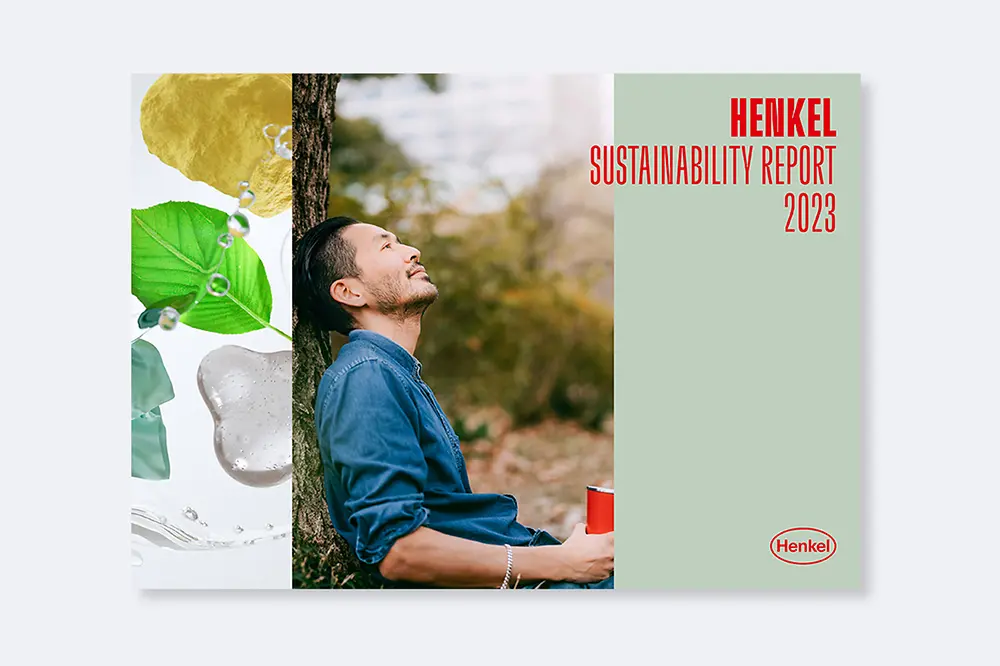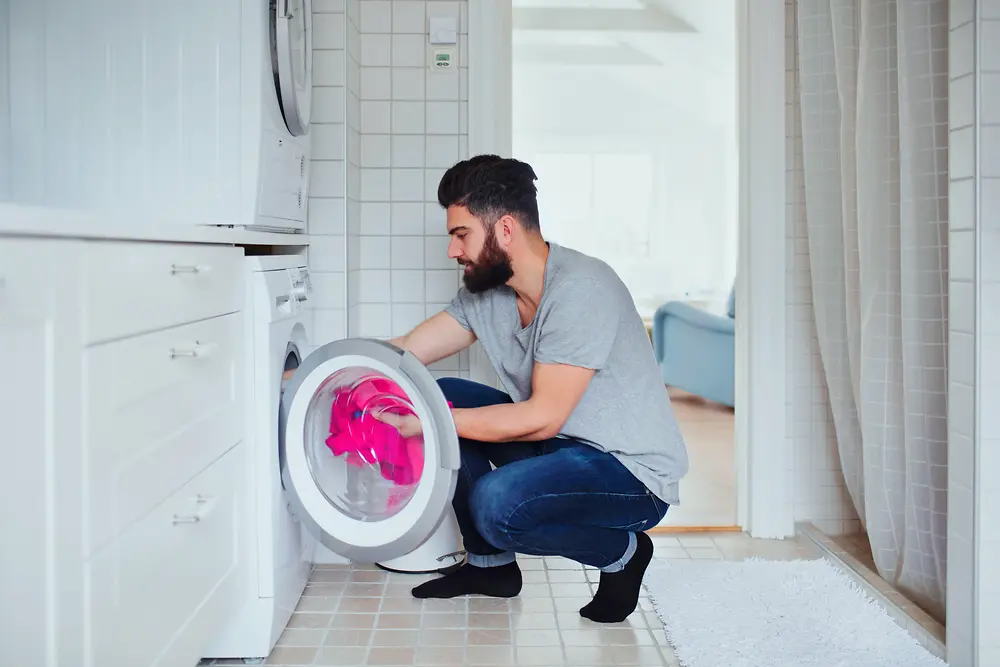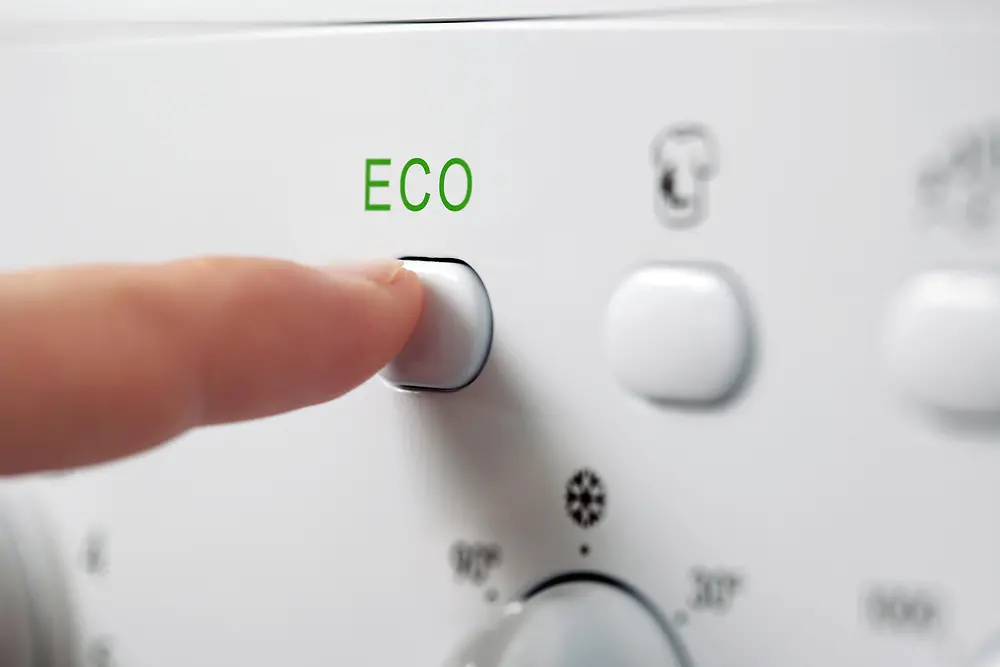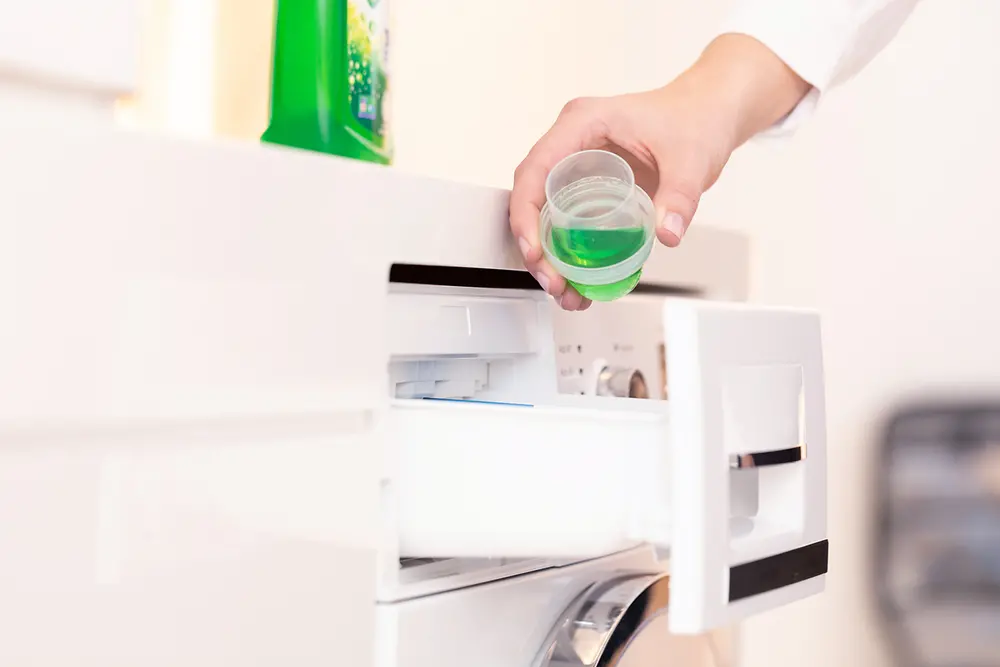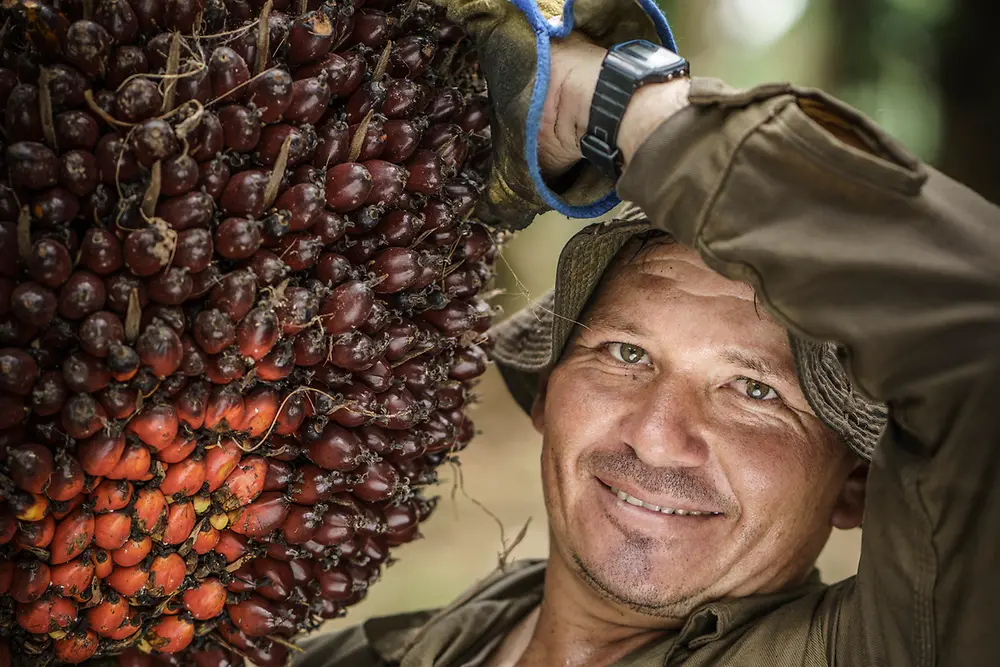Learn more about Henkel Brands & Businesses in UK & Irelands: Includes useful information about the brands, technologies and latest innovations in our business areas: Adhesive Technologies and Consumer Brands.
“We can extend the life cycle of textiles”
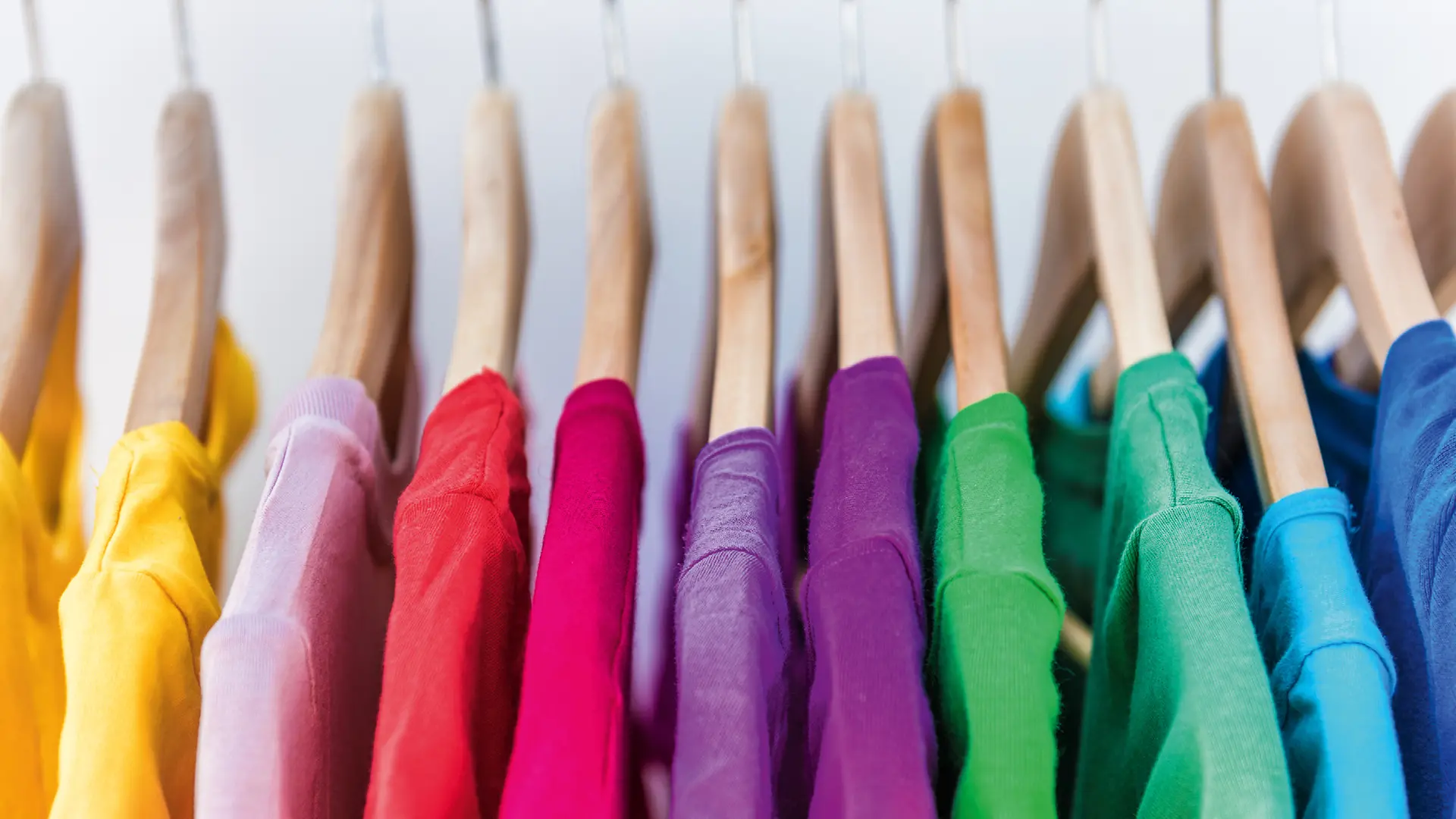
Christina, you are a textile technologist and use your expertise to research detergents at Henkel – first of all, tell us what a textile technologist does.
Christina: Textile technologists deal with the design, production and refinement of fibers and textile products like yarns, fabrics and textile materials. They also tackle all the related technical issues. They check, analyze and monitor processes at all stages of development and manufacturing in the textile industry that happen before a garment is designed and finished – the clothing industry is responsible for those last parts. The textile and clothing industry is characterized by very complex processes and a wide range of industry sectors – often spread across different continents. This requires a great deal of resources and a comprehensive logistics management concept. For several years now, we have observed a change in the industry: These processes need to become more sustainable, particularly in terms of circular economy and transparency. One of the factors driving these changes is that they are required as a matter of urgency – the textile and clothing industry is one of the largest and most important consumer goods sectors, and it consumes a great deal of resources.

The textile and clothing industry is characterized by complex processes and a wide range of industry sectors – often spread across different continents.
Christina Röleke, textile technologist at Henkel
The topic of sustainability is becoming increasingly important in the clothing industry; you also talk about this in our podcast (German). What should be taken into account when producing new textiles?
Christina: The processes in the textile industry are very complex so that a transition to sustainable production is, of course, also complex. Only when all stages are sustainable – from the fiber through to the finished garment – we can call it a sustainable production and sustainable textiles. Many companies in the textile industry are increasingly scrutinizing their business models and developing new, more sustainable strategies: Resource-saving processes that reclaim water or chemicals have become a real focus, as well as waste prevention. Some companies are looking into more environmentally friendly ways of harvesting their raw materials. The topic of social responsibility is also gaining increasing significance: From better working conditions to fairer pay – all of these things are more important than ever, and I think it’s excellent! While the industry is in the process of making changes, consumers are also being asked to think about the volume of products they buy and to place more emphasis on quality. If they stay curious, there’s a wealth of new, sustainable concepts out there to be discovered.
Global textile waste is a problem that consumers can also address. Questioning our own consumption and being open to new concepts are important steps in the right direction. For example, “second-hand” clothing is currently experiencing a renaissance after reinventing itself under the name “pre-owned.” In addition, concepts that focus on repairing or renting products are making a valuable contribution to textile longevity.
How is detergent research responding to these changes?
Christina: Properly caring for our textiles can help lengthen their life cycle. Take second-hand clothing as an example: These items have already been through many wash-and-wear cycles, have been subject to more stress and may be more sensitive – so they require extra care. We take this into account when we research new formulas for our detergents. Alongside these considerations, we have observed that many garments are made of fiber blends, for example a blend of cotton and polyester. Each fiber type has different properties, which can pose challenges not only for recycling but also for washing processes. Another factor is that a large proportion of synthetic materials are nowadays in use. Polyester is especially popular; it is both cheap and particularly beneficial because of its ability to modify the fiber or add finishing to support the readymade clothing items with specific functionalities like for example, sports textiles with the ability to better transport moisture.
Properly caring for our textiles can help lengthen their life cycle.
Which fibers and fabrics do you think are sustainable and why?
Christina: I think the fibers that will continue to gain in importance over the next ten years will be cellulose fibers, such as Lyocell. Until now, cellulose fibers have been extracted from natural raw materials such as fast-growing woods. Some very promising approaches are currently in development that produce the raw materials for this type of fiber using treated cellulose waste. The challenges would be the strength of the fibers and the higher production costs, for example compared to polyester. Therefore, for economic reasons alone, polyester is likely to continue to be used frequently over the next ten years. Although research into developing organic-based polyester fibers is also ongoing, at the moment these are not very competitive in terms of costs. More recycled materials will be used as long as recycling processes achieve a competitive price-performance ratio. Cotton will also continue to be used in the next ten years, but it will be used less and there will be a strong focus on organic, certified cotton and second-hand textiles.

As a detergent manufacturer, we are part of the life cycle of textiles.
Christina Röleke, textile technologist at Henkel
Are detergent manufacturers one of the parties responsible for creating more awareness and transparency for sustainable fashion and textile care?
Christina: Yes, absolutely. As a detergent manufacturer, we are part of the life cycle of textiles, as our products are used once the product has been purchased. If our attitude changes in the future so that textiles “live” in our wardrobes for longer than one season, then our products will be used over a much longer period of time. For this reason, it is very important to understand new developments in the textile and fashion industry right from the outset: What does this mean for our laundry care products? What technological requirements arise from this? If we are thinking about disposal early in the process of creating textiles, it is essential that we also address the issues of care and create solutions to support these more sustainable processes.
Washing machines are also becoming more and more efficient in terms of saving resources. In the past, eco and cold-wash programs were a rarity, but they have been quite commonplace for a while now. Offering a variety of wash programs for different types of textile and cleaning requirements contributes to the longevity of the textiles.
One final question: How can we all keep our clothes in great condition for as long as possible?
Christina: The first and most important step is to think to yourself: For what kind of occasion do I actually use and wear this fabric? Do I wear it to the gym, while gardening, or just while I’m working at home? Once I’ve answered this question, I can pre-sort my laundry and decide on which program to use after looking at the label with the washing instructions. Do I need to use an intensive washing program with more mechanical power, or is a short program sufficient? For some garments, a cold wash at 20 degrees Celsius is sufficient, for example if they are only slightly dirty. Being attentive can also help when washing laundry. Remember, it doesn’t just protect the textiles – it’ll help the environment and your bank balance, too!
Detergents are becoming more powerful and remove stubborn stains even at low temperatures. Special product logos with the slogan “be sustainable – wash cold” on Henkel-brand detergents call on consumers to wash their clothes in a way that saves energy.
